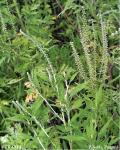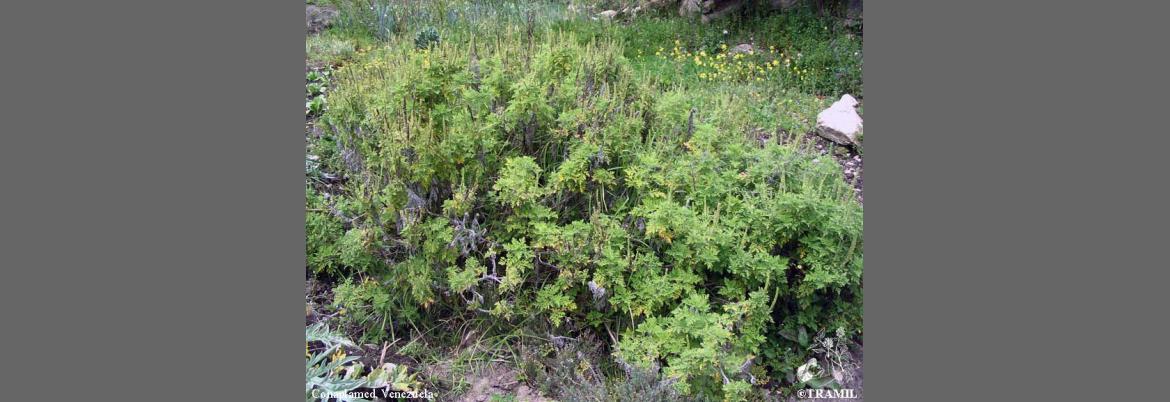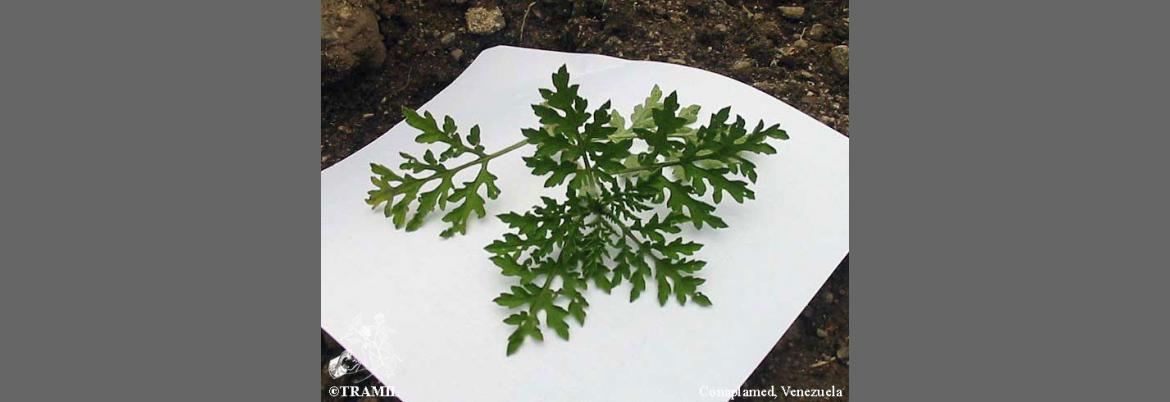1 LAGOS-WITTE S, 1988-89, 1996
Encuesta TRAMIL. Laboratorio de Histología Vegetal y Etnobotánica, Departamento de Biología, Universidad Nacional Autónoma de Honduras UNAH, Tegucigalpa, Honduras.
2 GERMOSEN-ROBINEAU L, GERONIMO M, AMPARO C, 1984
Encuesta TRAMIL. enda-caribe, Santo Domingo, Rep. Dominicana.
3 SOLIS P, CORREA M, GUPTA M, 1995
Encuesta TRAMIL (Comunidades afro-caribeñas). Centro de Investigaciones Farmacognósticas de la Flora Panameña CIFLORPAN, Facultad de Farmacia, Universidad de Panamá, Panamá, Panamá.
4 WHO, 1991
Guidelines for the assessment of herbal medicines. WHO/TRM/91.4. Programme on Traditional Medicines, WHO, Geneva, Switzerland.
5 Solis PN, VAsquez Y, Ayala H, Gupta MP, 2002
Informe de validación de algunas plantas tramil. Informe TRAMIL. Centro de Investigaciones Farmacognósticas de la Flora Panameña CIFLORPAN, Facultad de Farmacia, Universidad de Panamá, Panamá, Panamá.
6 GOLDSBY G, BURKE B, 1987
Sesquiterpene lactones and a sesquiterpene diol from Jamaican Ambrosia peruviana. Phytochemistry26(4):1059-1063.
7 HERZ W, ANDERSON G, GIBAJA S, RAULAIS D, 1969
Sesquiterpene lactones of some Ambrosia species. Phytochemistry 8:877-881.
8 SOUZA BRITO A, 1995
Toxicidad aguda - dosis repetidas. Trabajos TRAMIL. Dep. de Fisiología y Biofísica, Universidad de Campinas, Campinas, Brasil.
9 BUZNEGO MT, LLANIO M, FERNANDEZ M, LEON N, ACEVEDO M, PEREZ H, 1998
Perfil neurofarmacológico de la Ambrosia paniculata (Willd) O.E. Schulz (Artemisa). Rev Cuba Plantas Med 3(1):42-45.
10 PAZOS L, COTO T, CAIZA F, 2009
Irritación dérmica, piel lesionada en conejos, hoja fresca, de Ambrosia peruviana. Informe TRAMIL. Laboratorio de Ensayos Biológicos, LEBi, Universidad de Costa Rica, San Pedro, Costa Rica.
11PAZOS L, COTO T, CAIZA F, 2009
Irritación dérmica, piel lesionada en conejos, hoja macerada en alcohol 94%, de Ambrosia peruviana. Informe TRAMIL. Laboratorio de Ensayos Biológicos, LEBi, Universidad de Costa Rica, San Pedro, Costa Rica.












